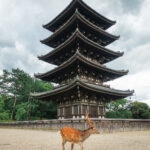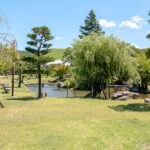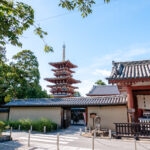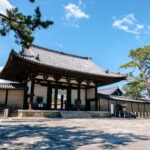This post may contain affiliate links. Please read our disclosure policy.
Standing at the heart of Nara Park, Todaiji Temple is home to the world’s largest bronze Buddha, stunning wooden architecture, and centuries of Buddhist history.
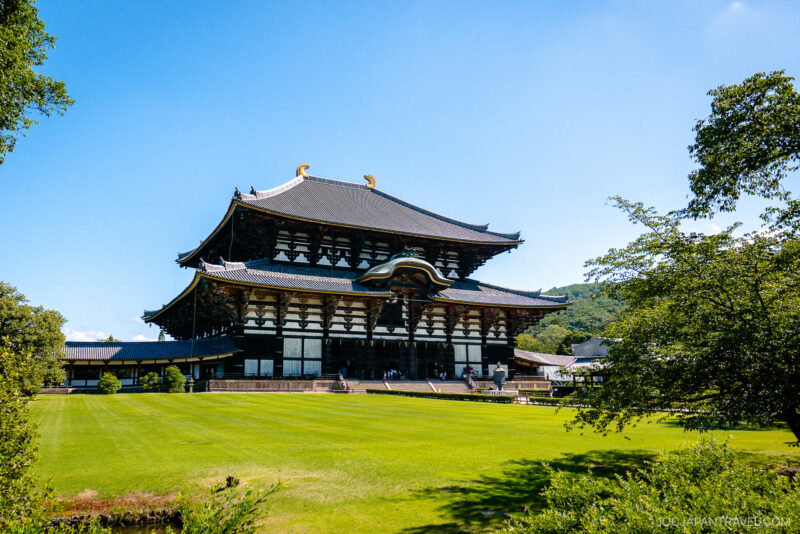
Why We Loved Visiting Todaiji
Our family visit to Todaiji was one of the highlights of our Nara trip. The scale of the temple and its spiritual atmosphere left us amazed.
The Great Buddha Hall (Daibutsuden)
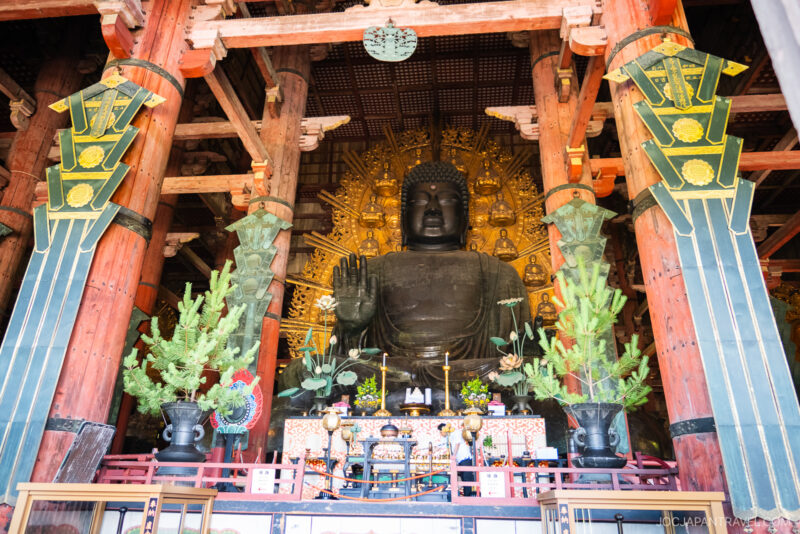
The main attraction is the 15-meter-tall bronze Buddha, known as Vairocana. Sitting inside the enormous wooden hall, the statue radiates calm and strength. The hall itself, rebuilt in 1709, is one of the largest wooden structures in the world and a designated National Treasure.
Nandaimon Gate and Guardians
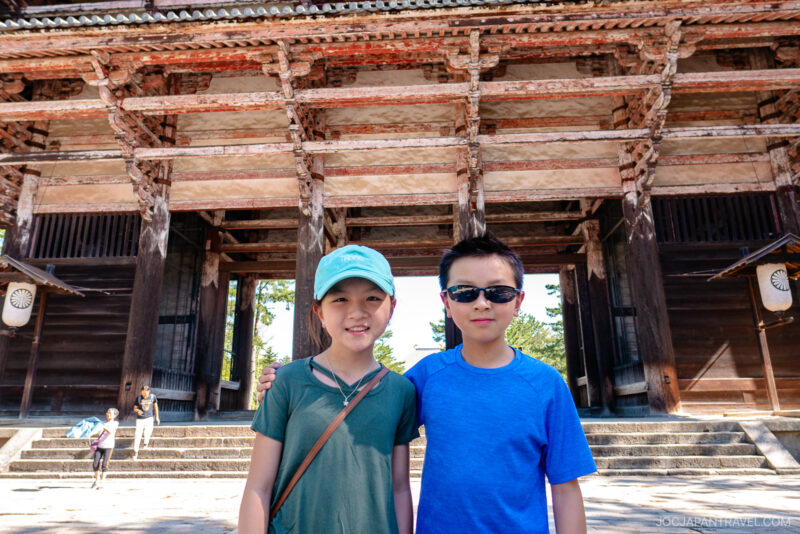
Before reaching the main hall, we passed through Nandaimon, the Great South Gate. This massive gate is guarded by two fierce warrior statues, Nio and Kongorikishi, carved in the 1200s by master sculptors Unkei and Kaikei. Standing over 8 meters tall, these figures seem alive with power.
Kagami-ike Pond
Just beyond the gate is Kagami-ike, or Mirror Pond. On calm days, Todaiji reflects perfectly in the water, which makes it one of the best photo spots on the temple grounds.
Deer in Nara Park
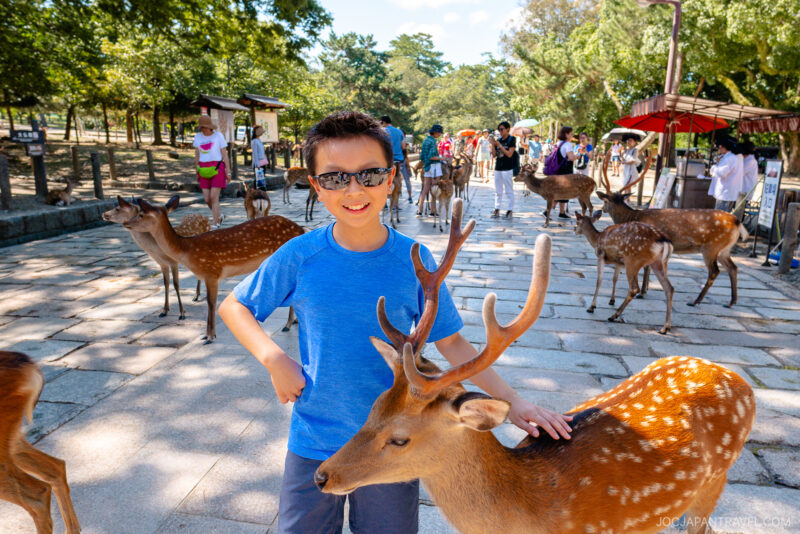
Deer roam freely around Todaiji and the wider Nara Park. Vendors sell shika senbei (deer crackers), which you can offer to them. Our kids always love the experience, but be mindful that the deer can get aggressive when food is involved. They’ve been bitten before when trying to feed the deers.
Details Inside the Great Buddha Hall
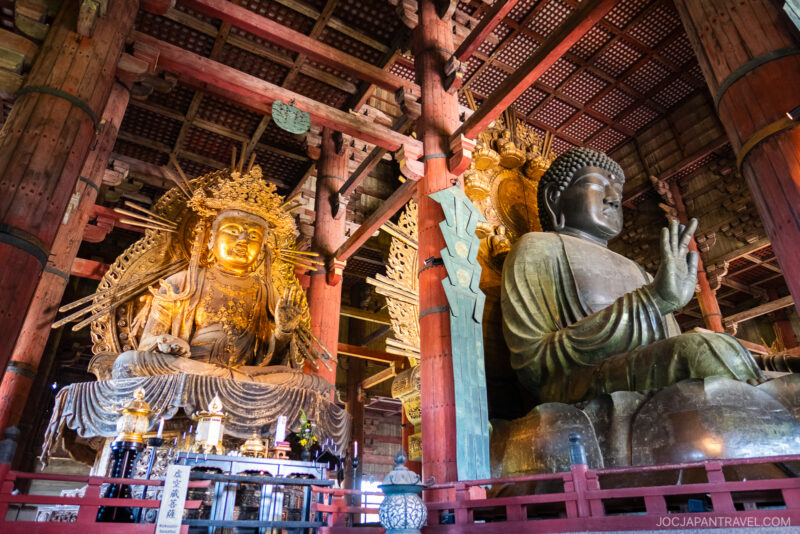
We enjoyed looking beyond the main Buddha statue at the many details inside:
- An octagonal bronze lantern dating back to the 700s.
- Wooden guardian statues like Koumokuten and Tamonten.
- Scale models showing both the ancient and current versions of the temple.
- A pillar with a hole at its base, said to be the size of the Buddha’s nostril. Kids squeeze through it for good fortune!
The Story Behind Todaiji

Todaiji was founded in the 8th century by Emperor Shomu during a period of disease and natural disasters. He hoped Buddhism would protect and bring peace to Japan. The temple became the head of a national network of provincial temples, known as kokubunji, and played a central role in spreading Buddhism across the country.
Although the original structures burned down several times, Todaiji was faithfully rebuilt. The current Great Buddha Hall, while smaller than the first version, still inspires awe with its height of nearly 50 meters.
How to Get to Todaiji Temple
From Kintetsu Nara Station
- Walk through Nara Park. It takes about 20 minutes.
- Follow signs for Daibutsuden. Paths are stroller friendly.
From JR Nara Station (奈良駅)
- Ride the Nara Kotsu bus to Daibutsuden Kasuga Taisha-mae. Walk 5 minutes.
From Kyoto
- JR Nara Line rapid from Kyoto Station to JR Nara Station. About 45 minutes.
- Kintetsu Limited Express from Kyoto Station to Kintetsu Nara Station. About 35 minutes.
From Osaka
- Kintetsu Nara Line from Osaka Namba to Kintetsu Nara Station. About 40 minutes.
- JR Yamatoji Rapid from JR Osaka Station to JR Nara Station. About 50 minutes.
Pro Tip: Arrive early for fewer tour groups.
Is Todaiji Temple Worth Visiting?
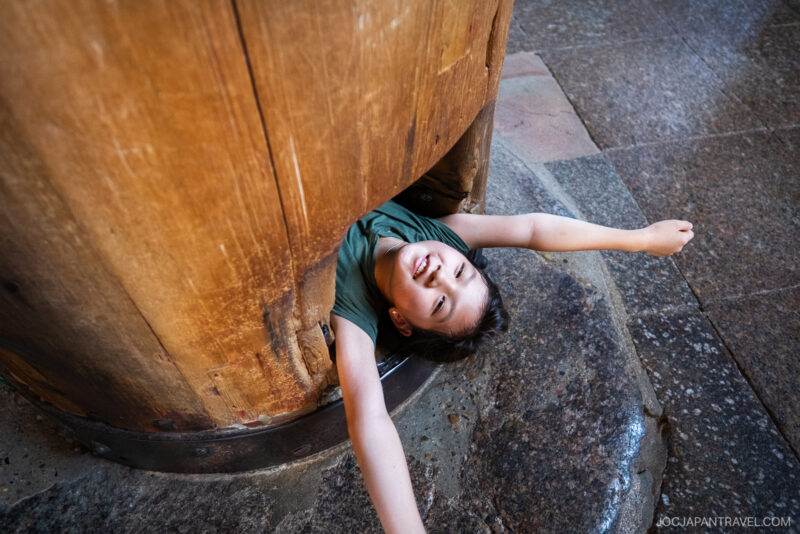
Todaiji Temple is one of the most important and iconic temples in Japan. The combination of history, immense scale, and its role in Japanese Buddhism makes it unique. Surrounded by Nara’s natural beauty and lively deer, it’s a destination that appeals to both families and history lovers. If you only have time for one temple in Nara, make it Todaiji.
More to Explore Nearby
After visiting the monumental Great Buddha at Todai-ji, you are in the heart of Nara Park, placing you close to magnificent Shinto shrines, the historical merchant quarter, and the city’s other majestic temples.
- Kasuga Taisha – Explore this beautiful Shinto shrine nearby, renowned for its vermillion architecture and thousands of hanging bronze and stone lanterns.
- Nara Park – Wander through the sprawling public park surrounding the temple, famous for its thousands of friendly, freely roaming wild deer.
- Kofuku-ji Temple – Discover the site of Nara’s iconic five-story pagoda, one of the oldest and most historically significant temples in the city.
- Naramachi – Explore the preserved old merchant quarter just south of the park, characterized by narrow streets, traditional wooden houses, and quiet cafes.

